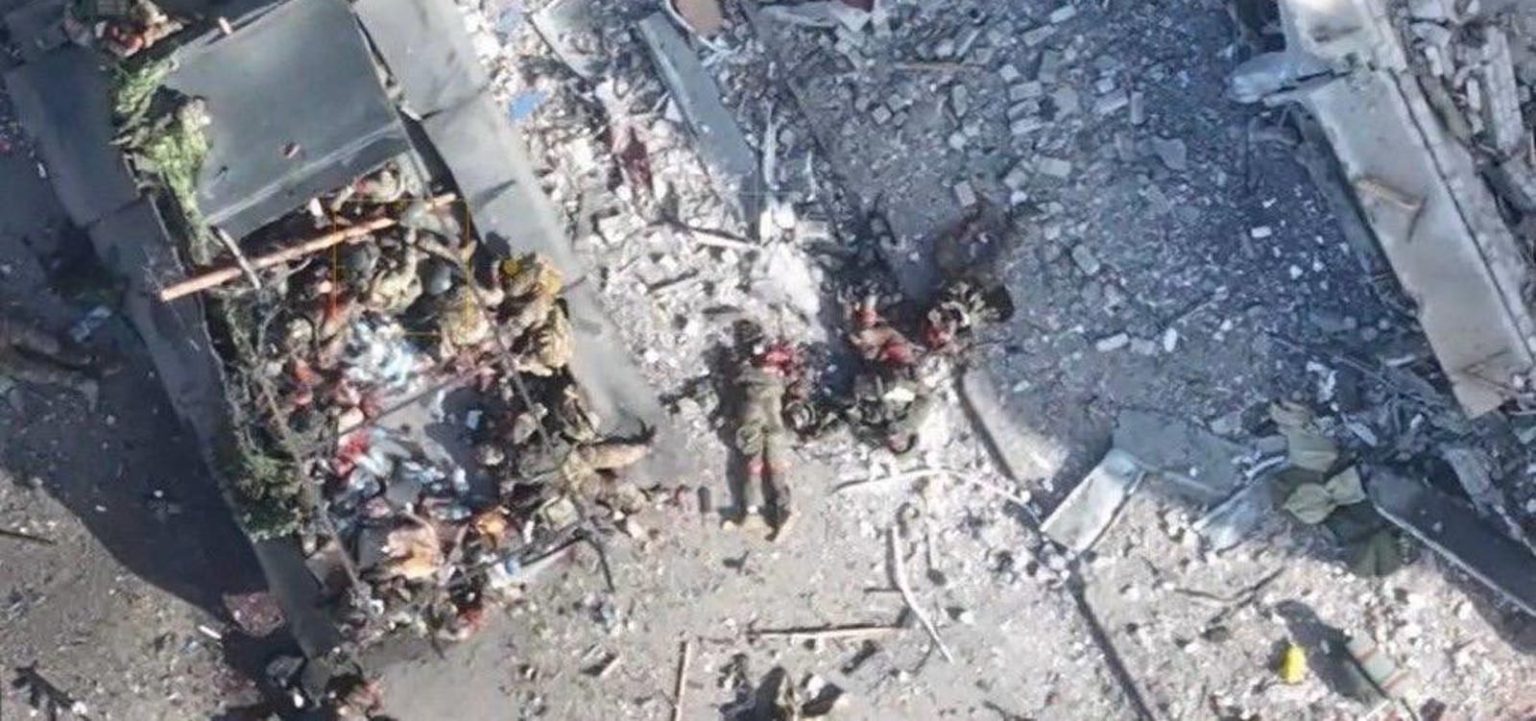A week after Ukrainian commandos cleared the last few Russian troops hunkering in the besieged PJSC Volchansky chemical aggregate plant in Vovchansk, in northern Ukraine’s Kharkiv Oblast, the Russians sought revenge.
It ended in disaster—for the Russians. Assaulting Ukrainian positions northwest of the 30-building chemical campus, the equivalent of half a Russian battalion—17 MT-LB armored tractors, three tanks and no fewer than 100 infantry—crashed into a wall of Ukrainian firepower.
The Ukrainian army’s 57th Motorized Brigade blasted the Russian assault group with hovering drones dropping grenades—among other weapons, most likely. When the smoke cleared, 16 MT-LBs and a tank lay wrecked. There were literal piles of dead and mangled Russians around the smoldering hulks. “Now the guys are finishing off the remaining infantry,” one Ukrainian blogger reported.
It’s not hard to understand what happened. The Russian infantry rode into battle on top of the 13-ton MT-LBs, around 10 men per vehicle—apparently calculating that the top-down drone threat was less serious than the bottom-up threat from mines. It wasn’t a totally unreasonable assumption: the obsolete, thinly-armored MT-LBs are notoriously prone to burn when struck from below by mines.
But the Russians seemingly underestimated how much damage the 57th Motorized Brigade’s grenade-dropping drones could inflict on massed mechanized forces. The Ukrainians have steadily improved their drone-dropped munitions, adding more sensitive fuses and more powerful explosive fills. So the top-riding infantry rolling toward the chemical plant may have been fairly safe from mines, but they were catastrophically vulnerable to drones.
This is a problem for the wider Russian military as it pulls more 1970s-vintage MT-LBs out of long-term storage to replace some of the thousands of newer and more heavier BMP fighting vehicles the Russians have lost in 31 months of hard fighting in Ukraine. The infantry attached to these MT-LB units will face the same impossible choice: risk mine blasts while riding inside the old tractors—or risk drone attacks while riding atop them.
It’s not a uniquely Russian problem, of course, as the Ukrainian armed forces are also regenerating old MT-LBs in order to replace newer and heavier vehicles they’ve lost.
But the Ukrainians are defending in more sectors than they’re attacking. The Russians are attacking in more sectors than they’re defending. The defending Ukrainians can leave their MT-LBs behind and dig in. The attacking Russians often have no choice but to roll out in their death-trap vehicles and try to cross contested terrain in order to reach Ukrainian lines.
Unless and until the war’s momentum shifts and the Ukrainians go on the attack more widely along the 700-mile front line, Ukrainian troops can—for the most part—wait for Russian troops to come to them. More and more, the Russians will attack on top of aged armored tractors, easy targets for hovering drones.
Read the full article here





